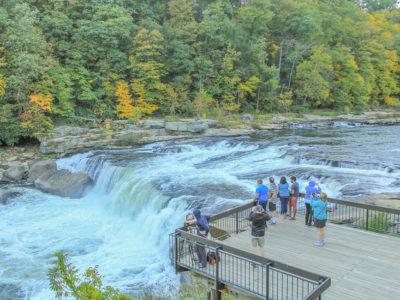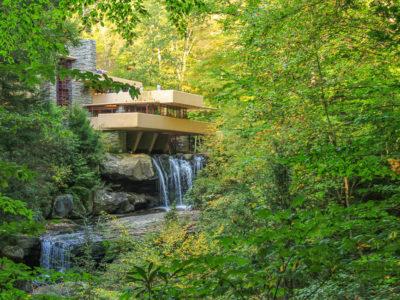Small city, big art scene. Some of the art collections in its museums are quite remarkable, thanks to the patronage of a big name plastered all over the place (hint: Carnegie).
If you want to see art beyond four walls you’ll find sculptures and art installations across parks, squares, and walkways.
One of my favourite things to do in Pittsburgh is walking along historic neighbourhoods and discovering architectural gems dating back to the 18th century.
If you’re in search of the gem of the gems, you’ll find a sparkling diamond not far from here. Fallingwater, the masterpiece of Frank Lloyd Wright, is only a day trip away from the City of Bridges (Pittsburgh has 446 bridges, to be exact).
Disclosure: This post contains some affiliate links. If you make a purchase through those links I will earn a commission at no additional cost to you (zero, nada). To check the full disclaimer, click here.
These are the best cultural activities in Pittsburgh
Table of Contents
Have Your 15 Minutes of Fame at the Andy Warhol Museum
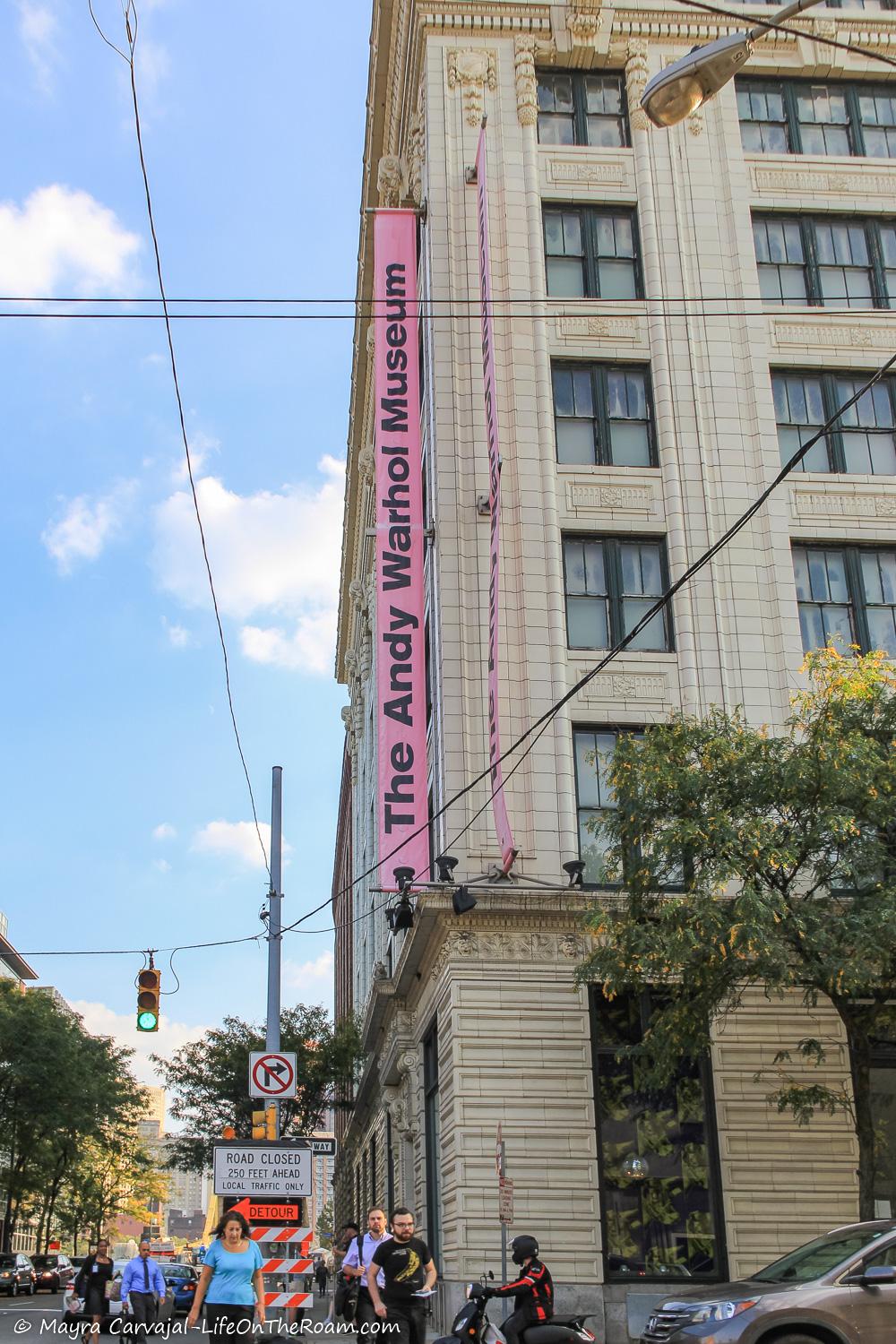
Here’s a fan of Andy Warhol, and if so are you, dash to this museum and plunge into eight levels of Andy’s genius.
Why is the world’s largest collection of Warhol art in a Carnegie Museum in Pittsburgh? Well, Andy was born and raised in Pittsburgh. Before moving to New York City, where he became ultra-famous, he attended what is known now as Carnegie Mellon University, earning a degree in pictorial design.
I learned about his life, his early works as an accomplished illustrator, his obsession with fame, and his evolution as an artist as he showcased his talent across several media.
It’s the perfect place to see it all: his famous pop paintings, silkscreen printings, oversized soap pad boxes, soup-can/celebrity-inspired portraits, his personal story, photographs, film, and video.
You can enjoy guided visits, discussions led by artists, concerts, and temporary exhibits about other artists and about art in the times of Warhol.
I also tried some of the fun interactive experiences: played with the famous Silver Clouds installation, did a Screen Test recording, and completed a colourful blotted-line ink drawing at The Factory underground. The exact same activities may not be available when you go, but it gives you an idea of the cool things you can do at the Andy Warhol Museum.
The Andy Warhol Museum
117 Sandusky St.; 1.412.237.8300; Open Wed. to Mon.: 10AM-5PM (Fri. open till 10PM with 50% discount on admission after 5PM); General admission: $25
Visit the Carnegie Museum of Art
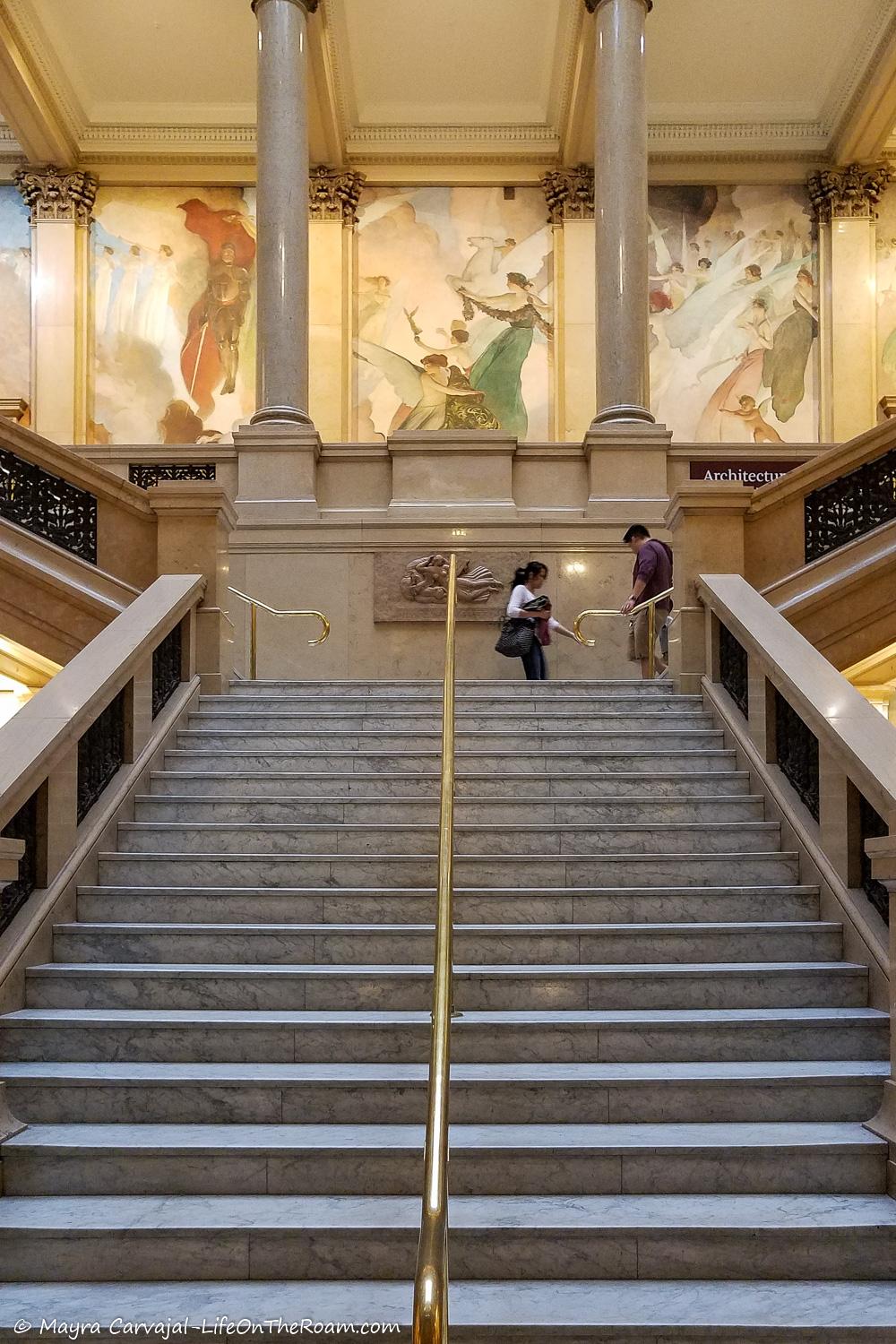
This is an all-you-can-see buffet for your eyes where the delicacies are paintings, sculptures, textiles, jewelry, photography, decorative arts, and all things art.
The museum collection features some big names: Monet, Renoir, Van Gogh, Corot, Louis Comfort Tiffany, Henry Moore, and others.
The temporary exhibitions include contemporary art on different media as well as interactive installations.
As a lover of all things design, I was ecstatic to find works from Frank Gehry, Isamu Noguchi, Robert Adam, and Louis Sullivan.
Make sure to leave enough time to stop by the Architectural Hall and gaze at the intricate details of the numerous real-life size architectural casts and models of masterpieces from around the world.
The beautiful doors, columns, portals, sculptures (the Hall of Sculpture is right next door) and architectural details are part of the largest architectural cast collection in the United States.
Check their calendar for free tours, workshops, artist’s talks, hands-on activities, and even yoga sessions.
Your admission to the Carnegie Museum of Art gives you access to the Carnegie Museum of Natural History.
The Carnegie Museum of Art
4400 Forbes Ave.; 1.412.622.3131; Open Wed. to Mon.: 10AM-5PM (Thu. opens till 8PM). General admission: $25 ($12 after 3PM on weekdays)
Learn about Earth at the Carnegie Museum of Natural History
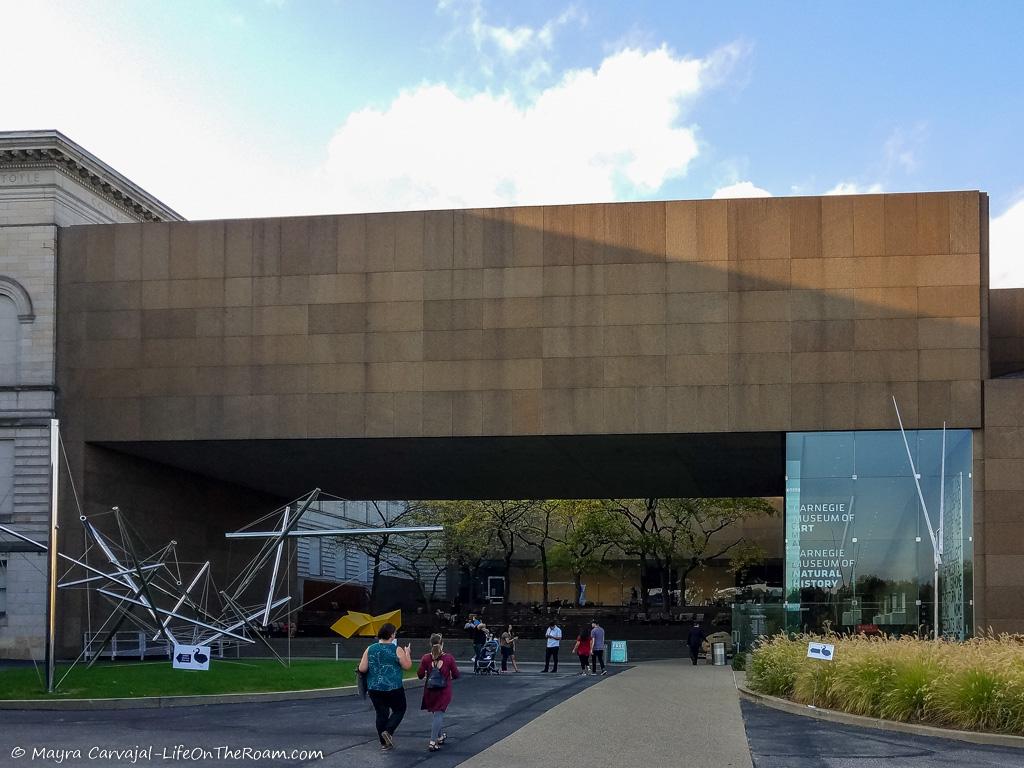
You’ll have the chance to witness the journey of your planet through the ages, to feel dwarfed by the size of the fossils of a few of its earlier inhabitants, and to see a showcase of other living creatures that call Earth home.
The Carnegie Museum of Natural History takes pride in having one of the best fossil collections in the world, featuring mostly real skeletons and only a few replicas.
The displays where the specimens are assembled recreate their original environment, transporting you to a pre-historic era like a time machine.
In the Hillman Hall and the Wertz Gallery, I was mesmerized by the range of colours and bizarre shapes of the extensive minerals collection and the unique design of the sparkling jewelry made with precious gems. Bling, bling.
Your admission gives you access to the Carnegie Museum of Art, located right next door.
The Carnegie Museum of Natural History
4400 Forbes Ave.; 1.412.622.3131; Open Wed. to Mon.: 10AM-5PM; General admission: $25 ($12 after 3PM on weekdays)
Step into a Real Submarine at The Carnegie Science Center

Have you seen these movies where space is so tight that people have barely any room to turn around?
No, I’m not talking about movies where people live in New York City studio apartments, I’m talking about movies like The Hunt for Red October, or Crimson Tide.
This is your chance to find out how it feels by having a near-claustrophobic experience when boarding a real Cold War-era submarine anchored in the Ohio River: the USS Requin (SS 481). Just days before the end of the Second World War it was ready for battle and was decommissioned by the US Navy in December of 1968.
You’ll need to reserve a ticket for the tour where you’ll see the panel boards with all sorts of knobs and levels to operate the vessel (looks complicated), the kitchen, dining room/game room, dorms, etc.
My hat’s off to whoever was able to sleep on the upper bunk beds, with their faces within inches of the curved ceiling. A sneeze must have felt like a shower. Yucky.
You can also visit all the science-related exhibits in the adjacent 4-story building and the sports centre exploring the science of sports.
To me, the submarine, the Buhl Planetarium, and the Miniature Railroad & Village are the most interesting exhibits from a design perspective.
The Miniature Railroad & Village is an animated, huge, 83′ x 30′ miniature model of what Pittsburgh (and some parts of Western Pennsylvania) used to look like before 1940.
The scenes look realistic thanks to the attention to detail they put into it. Making a single mini tree can take a whole day and the bushes are made of harvested hydrangea. The running water? Yes, it’s water.
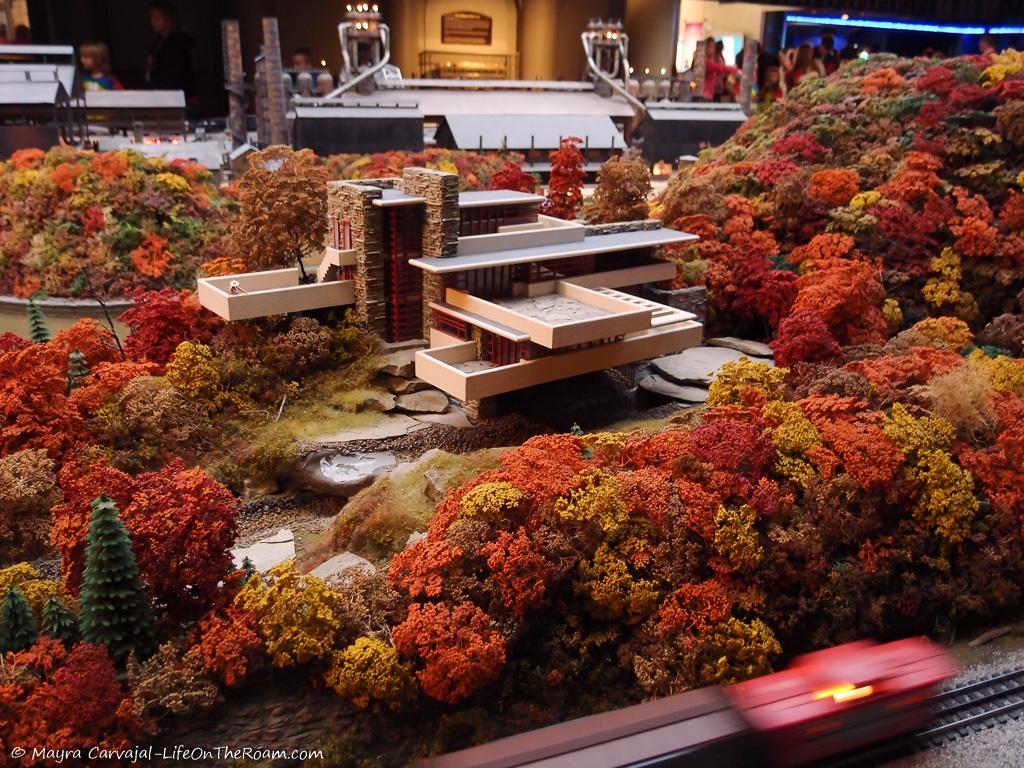
Your eyes keep moving following several mini trains and boats, and stopping when you spot some of the most celebrated landmarks of the region. My favourite landmark? Frank Lloyd Wright’s Fallingwater, of course.
You can also check their temporary exhibits (not included with general admission).
The Carnegie Science Center
One Allegheny Ave.; 1.412.237.3400; Open Wed. to Mon.:10AM-5PM; General admission: $25
Take a Trip Around the World: The Nationality Rooms at the Cathedral of Learning
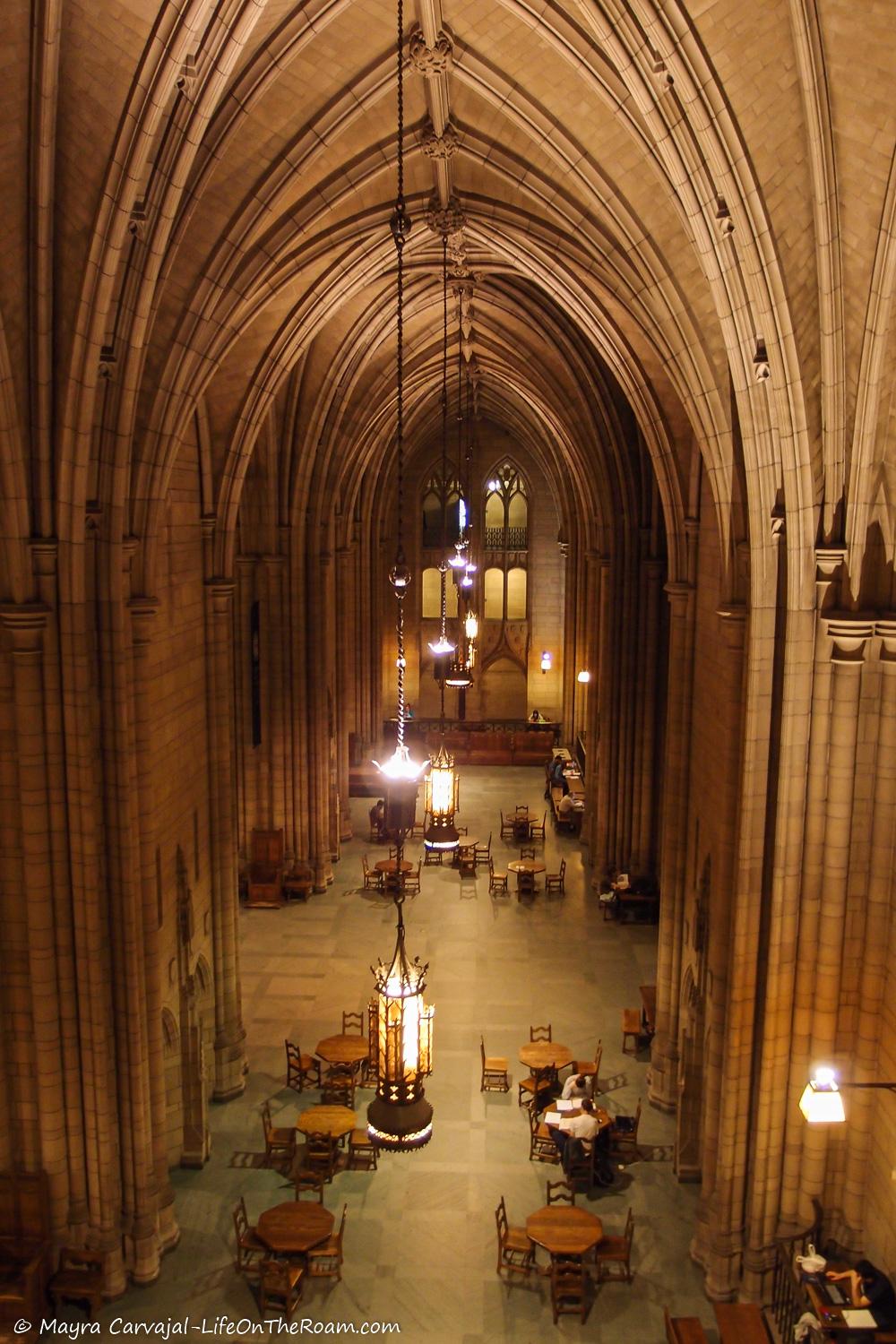
This is a wonderful opportunity to see up-close exquisite art, woodwork, and beautiful interior architectural details done by masters from around the world, under one roof.
Back in the early to mid-1900s, the University of Pittsburgh needed to expand its campus and the way to go was up.
With the help of the people of Pittsburgh corporate donors, they built a Gothic Revival tower soaring 535 feet, which earned a Pittsburgh Historic Landmark designation.
When building the classrooms, someone had the fantastic idea of using the spaces on the first and third floors to showcase the culture of nations whose people settled in Western Pennsylvania.
Committees from each nation funded, designed, executed -and currently maintain- all the architectural details and artwork you see on display inside the functional classrooms.
Walking in every room felt like opening Christmas presents, Design Edition: the 16th-century tapestry adorning the wall of the French classroom, inspired in the Empire period; the stained glass depicting historical events and legends in the Hungarian room; the carvings in the furniture of the Irish room aimed at warding off evil spirits; the breathtaking tempera decoration in the ceiling of the Polish room, inspired in the Wawel Castle.
A must-see is the Syria-Lebanon room. My eyes followed the intricate pattern formed with wood, gesso, gold, and silver leaf, covering the ceiling and walls, all the way down to the marble floors.
The interior elements used to be in a library of a home in Damascus and it’s one of the most beautiful and detailed rooms.
Every room has a written description of its style, origin, significance, materials, and authors. There are 31 in total.
Planning your visit
Visiting on your own: you can do this during weekdays only, when classes are in session, and you can only enter the rooms when they’re not in use.
With a guided tour: you can book a mini-tour (30 minutes) that costs $5, or a highlight tour (90 minutes) that costs $10. Available 7 days a week (depending on school calendar). No cash accepted and reservations are recommended.
You may also plan your visit around the concerts, lectures, and festivals that take place at the Cathedral of Learning.
The Nationality Rooms at the Cathedral of Learning
4200 Fifth Avenue; 1.412.624.6000.
Walking Tour of Pittsburgh: learn more about the culture, history and architecture of the Steel City with this fun 2-hour tour that will show you the beauty of downtown Pittsburgh. 12 people max.
Book this tour, with a rating of 4.9/5 based on more than 260 reviews.
Feeling thirsty? Check out this Pittsburgh Signature Guided Brewery Tour, where you’ll taste up to 12 beers at 3 different breweries. Rating of 5/5 based on more than 125 reviews.
Visit the Old Allegheny County Jail Museum
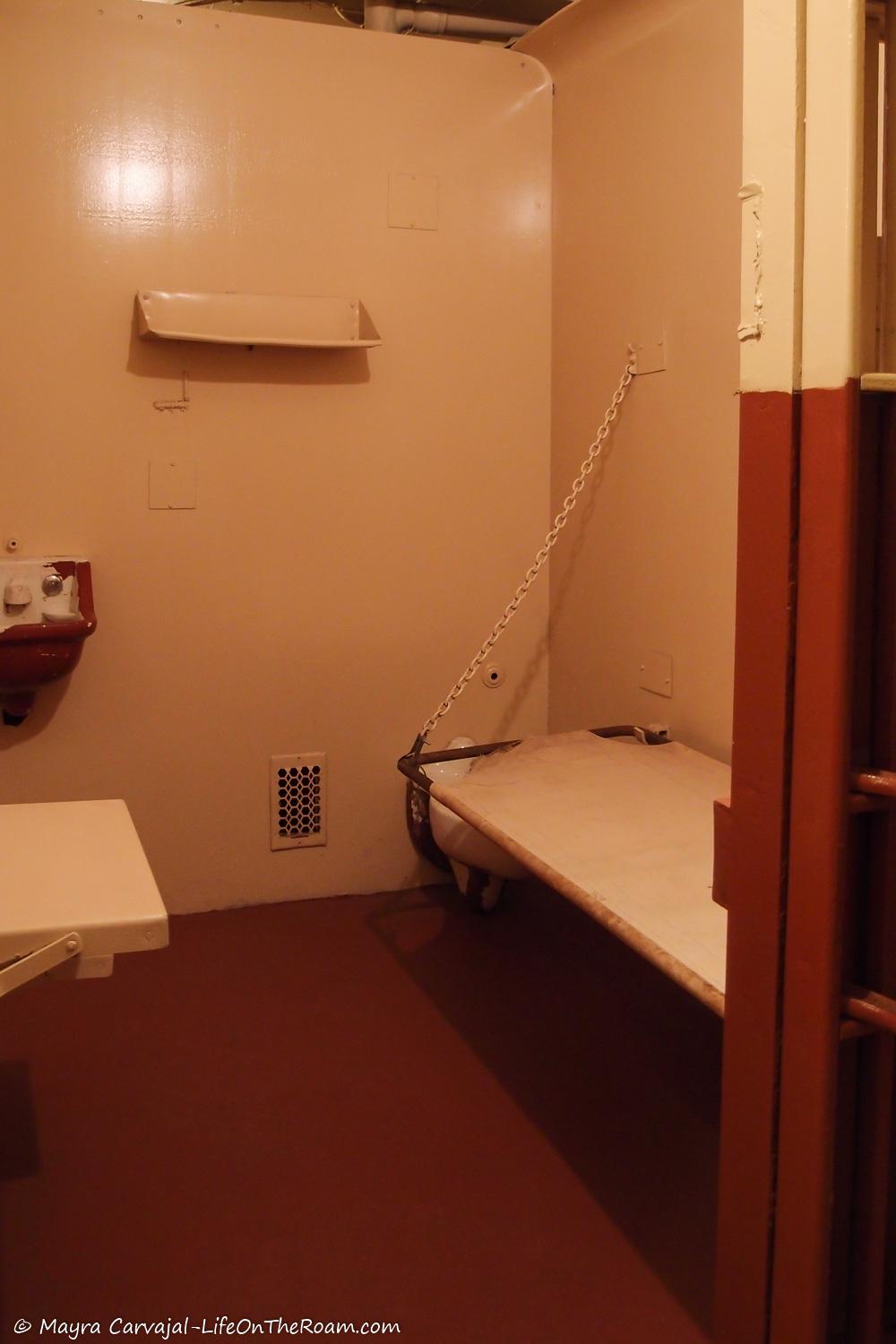
This Romanesque Revival style building, a National Historic Landmark, was a source of pride for his creator: the celebrated American architect H. H. Richardson. There’s even an architectural style named after him: the Richardsonian Romanesque. He never saw the final product though; he died before its completion.
From 1886 until July 1995 it functioned as a jail (with a notorious prison break and its own Bridge of Sighs).
A section of the building was transformed into a family courthouse while a cell block was transformed into a museum in 2005. You can take a self-guided tour of the cell block and ask questions to the guides on the floor.
The old jail has made it to the movies several times. The Silence of the Lambs is one of the most famous titles that used the cells as a filming location.
You’ll see two types of cells. The brick ones – a mere 8’ deep by 5’ wide where you can’t stretch your arms without touching both walls- are part of the original design of the building. The steel ones (7’-8.5” deep by 6’ wide) were added during the expansion. You can still see the original door hardware.
The guide told us about a former prisoner who visited the museum and shared with him his most vivid memory: the constant noise. Silence was the most elusive commodity.
440 Ross Ave.; Open Mondays only: 11:30AM-1PM; Free admission.
Check-Out the Murals and Architecture in the Deutschtown Historic District
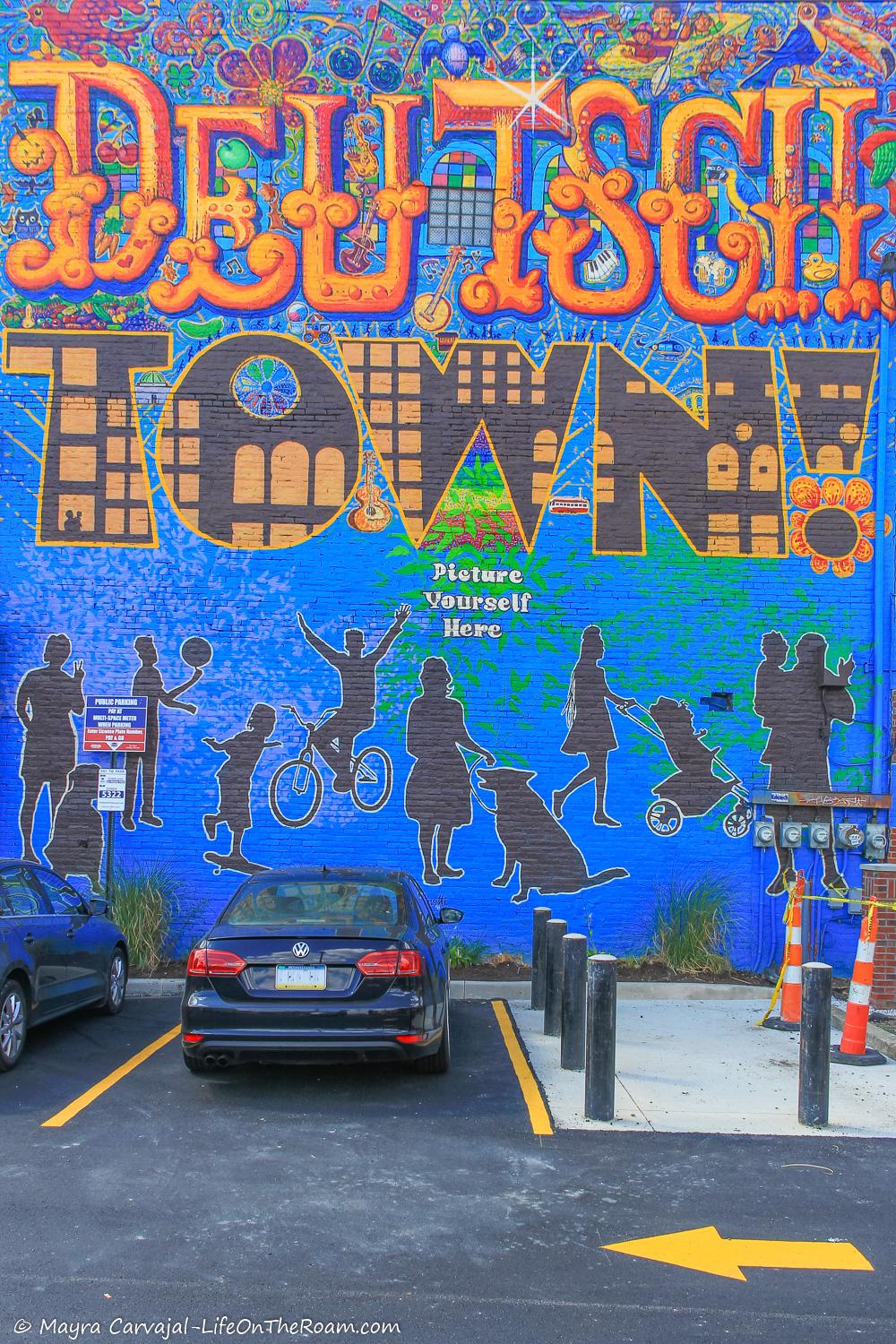
This is one of my favourite walks around the Burgh. Rows and rows of enchanting houses and small commercial buildings from the 1800s (back when it was the home base of Pittsburgh’s German community) in a variety of architectural styles.
You’ll see the ornate arches of the Italianate and the Richardsonian Romanesque, the intricate Victorian architectural details with its beautiful gables, and stained glass panels adorning doors and windows.
What else? Look for the colourful murals and some quirky art installations.
Discover the Art and Architecture in The Strip Historic District
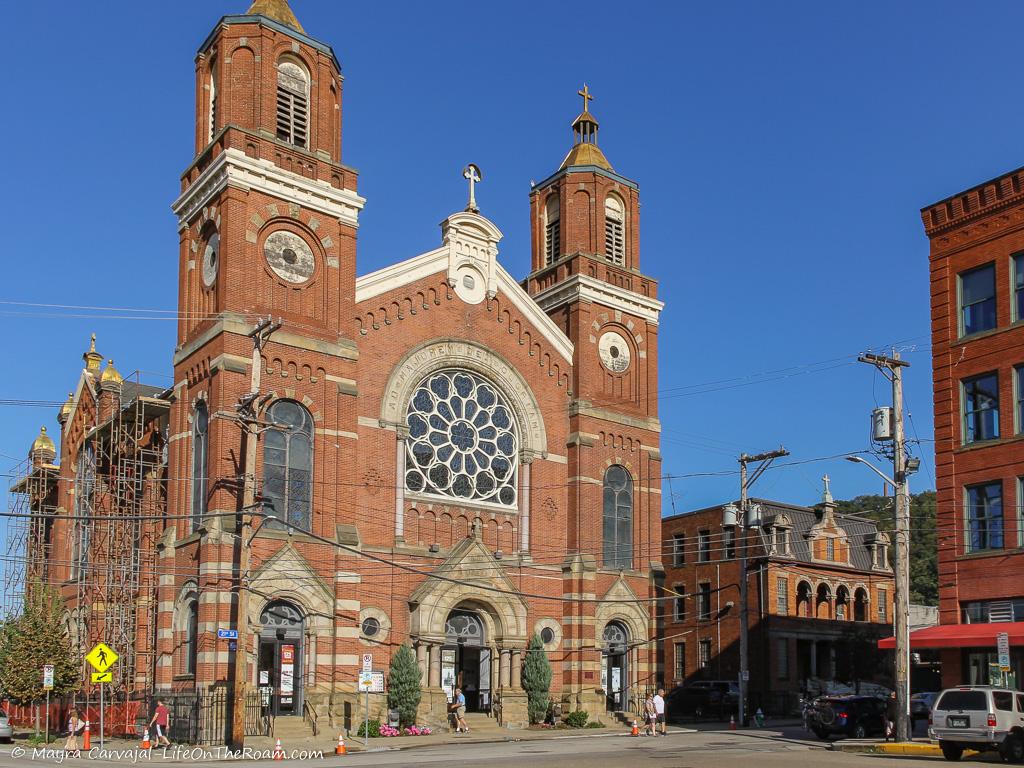
Beyond the stores and bars that populate this commercial area of Pittsburgh, full of old warehouses, you’ll find some historic buildings such as the St. Stanislav Kostka Roman Catholic Church, built in 1891, with beautiful stained glass windows (architect: F.C. Sauer). This landmark, on 57 21st St., was the first ethnic Polish parish in Pittsburgh.
Not far from this church, a stop you can’t miss is the Gallery of the Society for Contemporary Craft.
You can visit the temporary exhibits, see the artwork made with craft materials, shop for unique bags, jewelry, and art pieces made of glass and ceramics.
For a hands-on experience, you can sign up for one of their workshops. They also offer tours of their facility.
The Society for Contemporary Craft
5645 Butler St.; 1.412.261.7003; Open Tue. to Sat.: 10AM-4PM (varies per season); Free admission
Where to Eat in Pittsburgh
Mon Aimee Chocolat
Chocolate lovers, this is heaven. High-quality chocolate from around the world (over 60 countries!), and all the varieties you can think of. Happiness guaranteed.
2101 Penn Ave. (at the corner with 21st St. in the Strip District); 1.412.395.0022
Pennsylvania Macaroni Co.
If you can prepare a meal where you’re staying, stop by this Italian market to stock on freshly baked bread (preservative-free), European cheeses, sauces, fresh pasta and all sort of Mamma Mia deliciousness.
2010-2012 Penn Ave. (also in the Strip District); 1.412.227.1982
Red Fin Blues
Good food with plenty of vegetarian options. I enjoyed pairing my early dinner with a nice view of the river in their ample terrace, after taking a long walk through the Three Rivers Heritage Trail. This place closes for winter.
100 Waterfront Drive; 1.412.322.5837
Pittsburgh is a great destination for a short trip on the East Coast. Want to learn more about this city? Check my blog post about why this is a good place for outdoor enthusiasts.
YOU MAY ALSO WANT TO READ
BOOKING FLIGHTS AND ACCOMMODATIONS
Book your flight without losing your shirt
We check Momondo to find great deals to book our flights. Also, check Great Escape: it combines the listings from Expedia, Kiwi, Kayak, (and Skyscanner on the premium service) to find the best airfares.
To find a place to stay for less
Booking.com: this site combines everything under the sun. You’ll find hotels, apartments, B&B, hostels, rooms, etc., with all sort of filters to make your search a breeze.
Hotwire: the first site I check when we plan to stay at a hotel for a few nights. You can save anything from 20% to 60%. Use the search filter to find what you want and you’ll end up with three listings that match your criteria. You’ll know which one you’ll get after you book. If you can handle a little bit of uncertainty you can score big savings.
House Sitting: you take care of people’s pets and house for free while staying for free. It’s the closest thing to experiencing a place “like a local”. But it comes with responsibilities… Are you an animal lover? It may become your new way to travel.
To get travel insurance
SafetyWing: travel medical insurance that gives us peace of mind knowing that we’re covered in case of emergency. It’s convenient, affordable, and suitable for digital nomads who spend a long time outside their home country.
Check the full list of travel resources on my Resource Page for more options and savings
